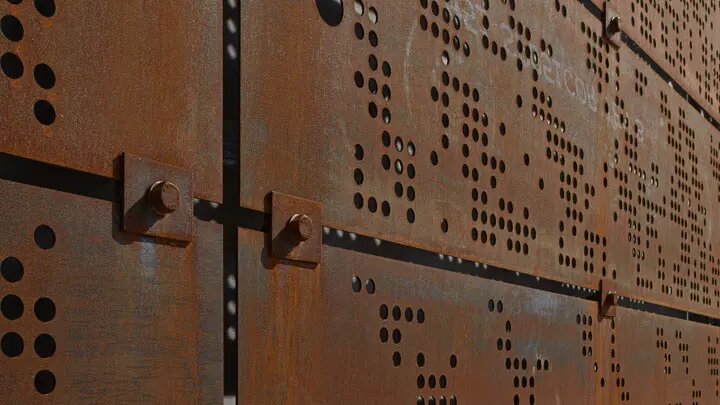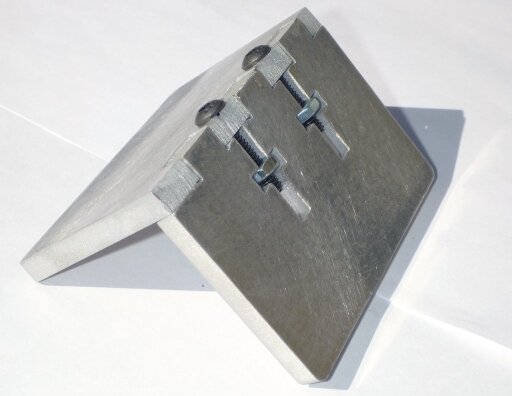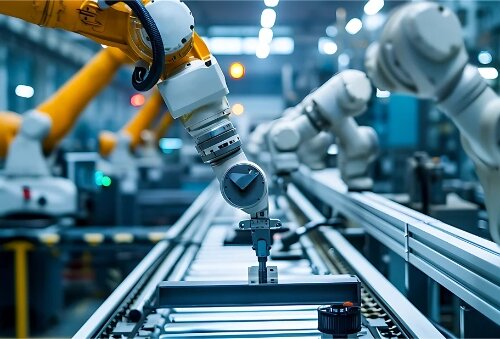Every year, corrosion costs manufacturers billions in lost productivity, replacements, and warranty claims. For sheet metal products, the problem starts small — a rust spot, a stain near a joint — but it often ends with weakened structure, customer complaints, or complete part failure.
Corrosion is more than a cosmetic issue. It compromises strength, reliability, and electrical grounding. Once it begins, repair costs usually exceed the savings from cheaper materials or skipped coatings. That’s why successful projects address corrosion in the design phase, not after production.
Designing corrosion-resistant sheet metal parts requires three main pillars: selecting the right material, shaping parts to avoid moisture traps, and choosing proper coatings and finishes. When these decisions align early, parts last years longer, maintenance drops, and brand reliability grows.
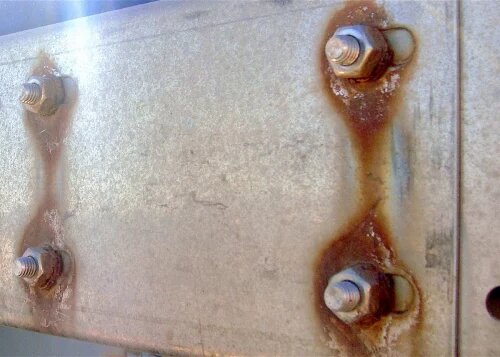
Understanding Corrosion in Sheet Metal
Corrosion is a natural reaction between a metal and its environment. It occurs when metal atoms lose electrons, forming oxides, hydroxides, or salts.
Common Corrosion Types
Uniform corrosion spreads evenly across a surface. It’s predictable and usually results from consistent exposure to air and moisture. Regular coating and maintenance can slow it significantly.
Pitting corrosion forms small but deep holes that can quickly penetrate thin sheet metal. Chloride-rich environments, such as coastal areas or cleaning chemicals, often trigger it. A single pit can grow through a 1 mm sheet in less than a year if left unchecked.
Crevice corrosion occurs when gaps or overlaps trap stagnant liquid, such as under gaskets or between riveted joints. Oxygen levels drop inside these spaces, creating an aggressive local environment.
Galvanic corrosion appears when two different metals touch in a conductive liquid. The less noble metal corrodes faster. For instance, using carbon-steel screws on aluminum panels can cause visible rust streaks within months.
Stress corrosion cracking (SCC) happens when tensile stress combines with a corrosive medium. Weld zones or bent corners may slowly develop microcracks that lead to sudden failure.
Environmental Factors and Risk Levels
The corrosion rate depends heavily on the part’s environment. Below is a general reference for typical exposure categories:
| Environment | Example Conditions | Typical Material Loss (Mild Steel) | Recommended Materials |
|---|---|---|---|
| Indoor Controlled | Air-conditioned room | <0.01 mm/year | Mild steel, coated aluminum |
| Outdoor Urban | Occasional rain, low pollution | 0.02–0.05 mm/year | Zinc-coated steel, 304 stainless |
| Industrial | Acidic gases, high humidity | 0.05–0.1 mm/year | 316 stainless, anodized aluminum |
| Marine / Coastal | Salt mist, high humidity | 0.1–0.2 mm/year | 316 stainless, titanium |
These values show why a slight upgrade in material can deliver significant savings over a part’s lifetime. A mild-steel panel may last 2–3 years outdoors, while a stainless 316 panel in the exact location could exceed 20 years.
Selecting the Right Materials
Material selection forms the foundation of corrosion resistance. Coatings and finishes can add protection, but if the base metal corrodes easily, long-term performance will always be limited.
Stainless Steels
Stainless steels are the backbone of corrosion-resistant design. Their high chromium content forms a self-repairing oxide film that prevents oxygen and water from reaching the metal surface.
- 304 stainless offers good overall protection for indoor and light outdoor use.
- 316 stainless adds molybdenum, improving resistance to chlorides and acids, ideal for marine or chemical environments.
- A properly passivated stainless enclosure can remain rust-free for 15–25 years even under outdoor exposure.
Ligas de alumínio
Aluminum develops a natural oxide layer that seals the surface. It’s lightweight, easy to form, and widely available in grades such as 5052 and 6061.
For added protection and appearance, anodizing increases oxide thickness to 10–25 μm, or up to 50 μm for industrial-grade parts.
Aluminum, however, should not directly contact copper or steel; insulating washers or coatings prevent galvanic reactions.
Cobre e Latão
Copper and its alloys resist atmospheric and industrial corrosion, forming a stable green patina that protects the surface. Brass is often chosen when both conductivity and visual appeal matter.
Although heavier and more costly, these materials are durable in architectural, electrical, or decorative applications.
Titanium and Nickel Alloys
For harsh chemical or marine exposure, titanium and nickel-based alloys provide unmatched stability. Titanium resists acids, alkalis, and salt water while maintaining strength at elevated temperatures.
Nickel alloys such as Inconel withstand extreme environments where other metals fail — though they are harder to machine and significantly more expensive.
Balancing Performance, Cost, and Fabrication
Selecting a corrosion-resistant material isn’t just about choosing the toughest option. The best choice balances performance, cost, and manufacturability.
Por exemplo:
- 316 stainless costs about 2× more than mild steel but may deliver 10× the service life.
- Anodized aluminum offers good protection with lower weight and machining costs.
- Mild steel remains economical when paired with galvanizing or powder coating in non-aggressive environments.
When in doubt, compare total lifecycle cost, not just the purchase price. A durable part that avoids replacement every few years often pays for itself quickly.
Designing for Drainage, Ventilation, and Cleanability
Material choice sets the foundation for corrosion resistance, but geometry determines how long that protection lasts. A well-designed part lets water drain, air circulate, and coatings reach every surface.
Preventing Moisture Retention
Water is the primary fuel of corrosion. Once it settles on a surface, oxygen and contaminants accelerate metal breakdown. To reduce this risk, shape components so liquids can drain freely.
Avoid flat horizontal surfaces, deep pockets, and sharp corners. Instead, use 3°–5° slopes on horizontal panels, rounded bends, and open channels that promote airflow.
For outdoor housings, add drain holes at the lowest points and position them away from electrical or cosmetic areas. A simple design change, like adding a sloped flange, can extend coating life by several years.
Avoiding Crevices and Gaps
Crevices act like small chemical reactors. Moisture and dust collect inside, oxygen drops, and corrosion accelerates. Tight overlaps, gasket joints, or spot-weld seams are common culprits.
Whenever possible, use continuous welds instead of multiple spots. If bolted joints are necessary, seal them with non-absorbent gaskets or corrosion-resistant sealant.
Maintain a minimum 0.5 mm clearance between overlapping panels for airflow or drainage. Sharp internal corners should be replaced with small radii to help with cleaning and coating coverage.
Designing for Cleaning and Ventilation
Regular cleaning slows corrosion dramatically — but only if surfaces are accessible. When designing enclosures or frames, leave space for cleaning tools, inspection, or airflow.
Vent holes or louvers help equalize humidity and temperature inside housings, reducing condensation. A few small openings can prevent trapped moisture without affecting the structure or protection rating.
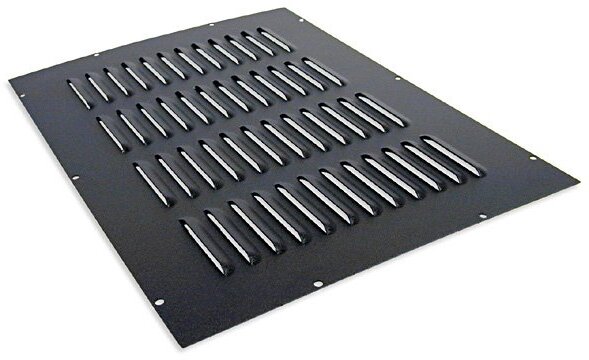
Surface Finishing and Protective Coatings
Even with ideal materials and geometry, a reliable barrier is still needed. Acabamento da superfície creates that final layer of defense. The correct finish depends on exposure conditions, cost, and aesthetic goals.
Common Protective Finishes
Revestimento em pó
Powder coating applies an electrostatically charged powder cured under heat. The result is a durable skin 60–120 μm thick. It resists UV rays, scratches, and most chemicals, making it suitable for outdoor cabinets and machine enclosures. It offers a long service life at a moderate cost.
Anodização (para alumínio)
Anodizing thickens the natural oxide layer to 10–25 μm (standard) or 40–50 μm (industrial). The oxide bonds tightly with the base metal, improving resistance and allowing coloring. Hard-anodized parts can last over a decade outdoors with minimal fading.
Zinc Plating and Hot-Dip Galvanizing
Zinc protects steel through sacrificial corrosion — the zinc layer corrodes first. Electro-galvanized coatings (5–25 μm) are best for indoor parts. Hot-dip coatings (up to 100 μm) withstand heavy outdoor or marine use. A 100 μm galvanized layer typically lasts 15–20 years in moderate environments.
Electropolishing and Passivation (for Stainless Steel)
Electropolishing removes surface impurities and micro-roughness, while passivation rebuilds the chromium-oxide layer lost during welding or machining. Together, they greatly enhance stainless durability and hygiene — ideal for medical, food, or marine assemblies.
Painting and Primers
Epoxy and polyurethane paints provide flexible, chemical-resistant finishes. Zinc-rich primers act as an extra protective barrier for mild steel before the final topcoat. A multilayer system — primer plus topcoat — often doubles corrosion life compared to a single finish.
Matching Coatings to the Environment
| Environment | Suitable Finishes | Approximate Lifetime |
|---|---|---|
| Indoor (dry) | Zinc plating, light powder coat | 5–10 years |
| Outdoor (urban) | Powder coat, anodizing, hot-dip galvanizing | 10–20 years |
| Marine / Industrial | 316 stainless with electropolish, heavy anodizing, multi-coat system | 15–25 years |
Estimated under typical maintenance cycles
Designers should also account for coating thickness. A 0.004″ (100 μm) layer may affect tolerances in hinges, tabs, or slots. Modeling the coating in CAD prevents alignment issues during assembly.
Pre-Finishing Design Adjustments
Surface finishing works best when planned early. Add masking zones around threaded holes or electrical contacts, and small holes for hanging during coating. Avoid deep recesses that trap powder or plating fluid.
By thinking about finishing before fabrication, you ensure complete coverage, consistent thickness, and lower rework costs.
Manufacturing and Process Considerations
Fabrication can either preserve or destroy corrosion resistance. Cutting, welding, and handling all influence how the surface behaves in service. Process discipline keeps protection intact from prototype to final assembly.
Controlling Heat-Affected Zones
High heat during soldadura ou corte a laser can weaken corrosion resistance by altering the metal’s microstructure. In stainless steel, overheating causes sensitization, where chromium carbides form and reduce the protective oxide layer.
To prevent this:
- Use controlled heat input and short weld runs.
- Cool between passes.
- Clean and passivate weld zones after finishing.
- Restoring the oxide film ensures the welded joint resists corrosion as well as the base material.
Minimizing Surface Roughness and Contamination
Rough or contaminated surfaces hold moisture and dirt. After cutting or grinding, deburr edges and polish exposed areas. A smooth Ra ≤ 1.6 μm surface improves both coating adhesion and corrosion performance.
Handle stainless parts with clean gloves; even fingerprints can leave chloride deposits that cause rust specks. Clean with neutral solvents before coating.
Fasteners and Assembly Practices
Fasteners often become the weakest corrosion link. Match materials whenever possible — stainless bolts for stainless panels, coated steel for galvanized structures.
When dissimilar metals are unavoidable, isolate them with nylon washers, plastic spacers, or sealant layers.
Apply uniform torque to avoid micro-gaps where water collects. Uneven compression can trap moisture and cause localized attack.
In-Process Inspection and Quality Control
Quality checks confirm that protective measures remain intact throughout production.
- Espessura do revestimento tests ensure consistent coverage.
- Salt-spray testing (ASTM B117) verifies expected lifetime.
- Visual inspections catch chips, burns, or missing finish early.
- Each inspection step prevents costly rework or field failures later.
Advanced Design Strategies
Designing for corrosion resistance doesn’t stop once fabrication is done. Long-term performance depends on how the design supports inspection, maintenance, and environmental changes over time.
Colaboração precoce entre a conceção e o fabrico
Most corrosion issues trace back to poor communication between engineering and production. Designers may specify tight seams, small cavities, or surfaces that are impossible to coat evenly. Once fabrication begins, these problems are expensive to fix.
Involving fabrication engineers early avoids rework. A DFM (Design for Manufacturability) review identifies risks such as inaccessible welds, poor drainage angles, or finishes incompatible with geometry.
For example, replacing overlapping panels with folded flanges can eliminate crevice zones while simplifying coating and assembly.
Early collaboration also ensures the right materials, cutting methods, and coatings are available in the supply chain. A few minutes of joint review can prevent years of field corrosion.
Maintenance and Lifecycle Planning
Even the best design needs care during its service life. Simple access points and cleaning allowances can double corrosion resistance in practice.
- Add inspection windows or removable covers for easy visual checks.
- Design replaceable modules or panels so damaged surfaces can be swapped instead of being scrapped.
- Specify routine cleaning intervals: rinsing every three months in coastal environments can reduce salt deposits by 80%.
Planned maintenance isn’t wasted effort — it’s part of the design. By planning how a product will be inspected and maintained, engineers ensure real-world performance matches design intent.
Lifecycle Testing and Verification
Corrosion resistance should be proven, not assumed. Laboratory testing confirms whether materials and coatings perform as expected.
- Salt-Spray Test (ASTM B117): exposes samples to continuous salt fog to simulate marine conditions.
- Humidity Chamber (ASTM D2247): checks coating integrity under constant moisture.
- Cyclic Corrosion Tests: alternate wet and dry cycles to replicate daily weathering.
For stainless assemblies, visual inspection for discoloration or weld oxidation is equally valuable. Even minor color shifts can signal heat-affected zones or surface contamination.
Long-Term Economic Benefits
Designing for corrosion resistance often adds cost upfront, but it pays off over a product’s lifetime. Replacing a corroded enclosure after three years costs far more than using a better alloy or coating from the start.
Consider a simple comparison:
- Mild-steel cabinet: $100 per unit, average life 3 years.
- 316 stainless cabinet: $180 per unit, average life 20 years.
Over ten years, the stainless version costs 40% less per year while avoiding downtime, repainting, and customer complaints. For OEMs and equipment manufacturers, this translates into fewer service calls and a stronger reputation for reliability.
Durable parts also reduce environmental impact by cutting waste and replacement frequency — an increasingly important factor for global buyers.
Conclusão
Corrosion prevention starts in the CAD model and ends in the field. Every detail — from the material alloy to the slope of a drain hole — affects how a product survives its environment.
By integrating corrosion control into material selection, geometry, finishing, and manufacturing, engineers turn durability into a design feature rather than an afterthought.
If you want to create sheet-metal parts that stay stable in harsh environments, our team at Shengen can help. We offer full DFM reviews, suggest suitable materials, and guide you on surface finishes that increase service life and lower long-term costs. Contact us to talk about your project and receive a free design review.
Olá, chamo-me Kevin Lee

Nos últimos 10 anos, tenho estado imerso em várias formas de fabrico de chapas metálicas, partilhando aqui ideias interessantes a partir das minhas experiências em diversas oficinas.
Entrar em contacto

Kevin Lee
Tenho mais de dez anos de experiência profissional no fabrico de chapas metálicas, especializando-me em corte a laser, dobragem, soldadura e técnicas de tratamento de superfícies. Como Diretor Técnico da Shengen, estou empenhado em resolver desafios complexos de fabrico e em promover a inovação e a qualidade em cada projeto.

